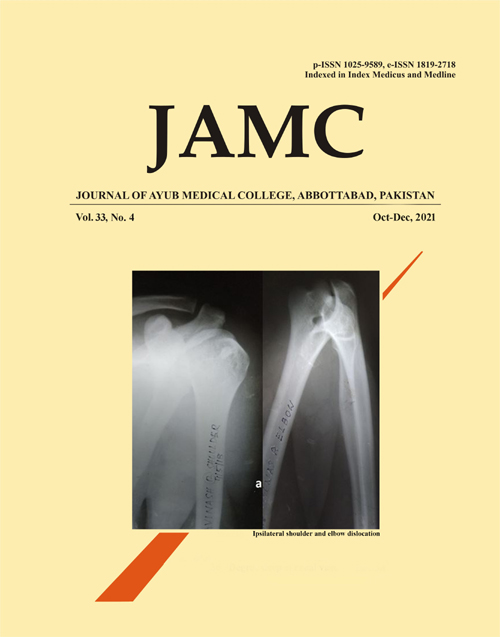CONTRAST INDUCED NEPHROPATHY IN HIGH RISK PATIENTS - MYTH OR REALITY
Abstract
Background: Contrast induced nephropathy (CIN) is potential stumbling block administration of contrast media. CIN has been defined as as elevation of serum creatinine (sCr) of more than ‰¥0.5 mg/dl (44 μmol/l) or 25% from the baseline within 48-72 hours in the truancy of alternate tenets of acute kidney injury. Incidence of CI-AKI in patients undergoing coronary angiography with normal baseline renal function was reported to be <3%. However, the occurrence of CI-AKI was found to be as high as 50% in CKD patients undergoing Coronary Angiography. This high incidence reported by different studies is mainly because of the difference in definition, underlying renal failure, type and dose of contrast media used and frequency of other co-existing important causes of acute kidney injury (AKI).Recent studies have been published showing that risk of CIN is an overestimated and over-reckoned entity in literature. Objective: To determine the frequency of CIN in CKD patients with Creatinine clearance (Crcl) less than 60 ml/min undergoing contrast exposure. Methods: We conducted Prospective, controlled single center trial in 42 patients having the creatinine clearance of less than 60 ml/min, they were risk stratified according to Mehran scoring system and underwent coronary angiography or contrast enhanced CT scan with contrast and specific protocol for prevention of CIN including intra-venous (IV) hydration with 0.9% Normal Saline was given before the procedure and were followed up to initial 72 hours post procedure. Results: 33 out of 42 patients, i.e., got adequate hydration as per protocol however 11 patients underwent procedure as pre-existing condition did not allow so. Out of 42 patients, risk stratification according to Mehran Scoring system revealed that 15 patients out of 42 patients were included in very high risk group, 14 were in high risk group and 13 patients were in intermediate risk group. Our experience revealed that 5 out of 42 patients (11.3%) were those who experienced CI-AKI and interestingly none of them required haemodialysis. Conclusion: Our study has raised serious question on incidence of CIN in high risk patients as reported previously. However, more studies are needed over this issue till that time we might consider CIN A myth rather than a reality.
References
McCullough PA, Adam A, Becker CR, Davidson C, Lameire N, Stacul F, et al. CIN Consensus Working Panel Epidemiology and prognostic implications of contrast-induced nephropathy. Am J Cardiol 2006;98(6A):5K-13.
Hossain MA, Costanzo E, Cosentino J, Patel C, Qaisar H, Singh V, et al. Contrast-induced nephropathy: Pathophysiology, risk factors, and prevention. Saudi J Kidney Dis Transpl 2018;29(1):1-9.
McDonald RJ, McDonald JS, Bida JP, Carter RE, Fleming CJ, Misra S, et al. Intravenous Contrast Material-induced Nephropathy: Causal or Coincident Phenomenon? Radiology 2013;267(1):106-18.
Wilhelm-Leen E, Montez-Rath ME, Chertow G. Estimating the Risk of Radiocontrast-Associated Nephropathy. J Am Soc Nephrol 2017;28(2)653-9.
Cramer BC, Parfrey PS, Hutchinson TA, Baran D, Melanson DM, Ethier RE, et al. Renal function following infusion of radiologic contrast material. A prospective controlled study. Arch Intern Med 1985;145(1):87-9.
Weisbord SD, Gallagher M, Kaufman J, Cass A, Parikh CR, Chertow GM, et al. Prevention of Contrast-Induced AKI: A Review of Published Trials and the Design of the Prevention of Serious Adverse Events following Angiography (PRESERVE) Trial. Clin J Am Soc Nephrol 2013;8(9):1618-31.
Goldfarb S, McCullough PA, McDermott J, Gay SB. Contrast-Induced Acute Kidney Injury: Specialty-Specific Protocols for Interventional Radiology, Diagnostic Computed Tomography Radiology, and Interventional Cardiology. Mayo Clin Proc 2009;84(2):170-9.
Briguori C, Visconti G, Focaccio A, Airoldi F, Valgimigli M, Sangiorgi GM, et al. Renal Insufficiency After Contrast Media Administration Trial II (REMEDIAL II): RenalGuard System in high-risk patients for contrast-induced acute kidney injury. Circulation 2011;124(11):1260-9.
Khwaja A. KDIGO Clinical Practice Guideline for Acute Kidney Injury. Nephron Clin Pract 2012;120(4):c179-84.
Edwards J. Contrast induced nephropathy Myth or reality? [Internet]. [cited 2021 Feb]. Available from: http://www.phemc.org/wp-content/uploads/2017/03/James-Edwards-Contrast-induced-nephropathy.pdf
Downloads
Published
How to Cite
Issue
Section
License
Journal of Ayub Medical College, Abbottabad is an OPEN ACCESS JOURNAL which means that all content is FREELY available without charge to all users whether registered with the journal or not. The work published by J Ayub Med Coll Abbottabad is licensed and distributed under the creative commons License CC BY ND Attribution-NoDerivs. Material printed in this journal is OPEN to access, and are FREE for use in academic and research work with proper citation. J Ayub Med Coll Abbottabad accepts only original material for publication with the understanding that except for abstracts, no part of the data has been published or will be submitted for publication elsewhere before appearing in J Ayub Med Coll Abbottabad. The Editorial Board of J Ayub Med Coll Abbottabad makes every effort to ensure the accuracy and authenticity of material printed in J Ayub Med Coll Abbottabad. However, conclusions and statements expressed are views of the authors and do not reflect the opinion/policy of J Ayub Med Coll Abbottabad or the Editorial Board.
USERS are allowed to read, download, copy, distribute, print, search, or link to the full texts of the articles, or use them for any other lawful purpose, without asking prior permission from the publisher or the author. This is in accordance with the BOAI definition of open access.
AUTHORS retain the rights of free downloading/unlimited e-print of full text and sharing/disseminating the article without any restriction, by any means including twitter, scholarly collaboration networks such as ResearchGate, Academia.eu, and social media sites such as Twitter, LinkedIn, Google Scholar and any other professional or academic networking site.










